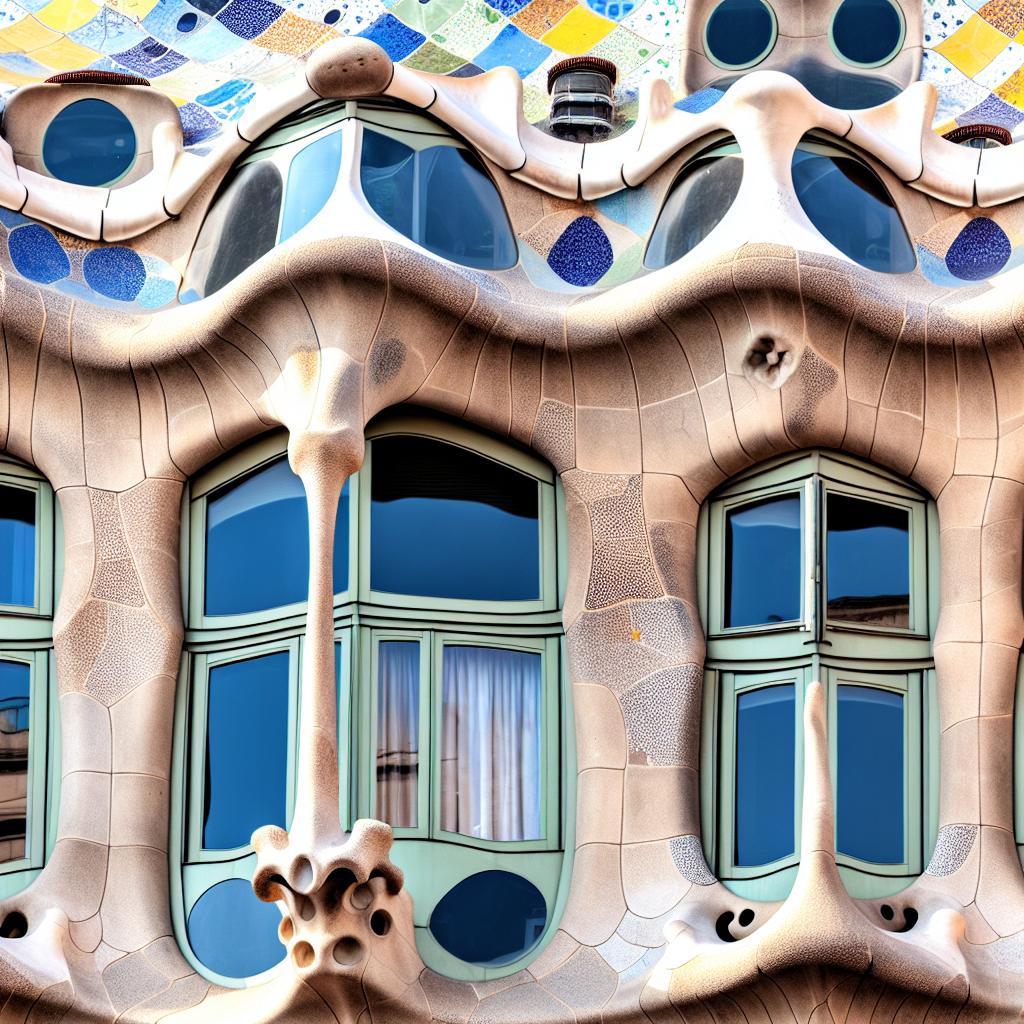Contents
The Architectural Marvel of Casa Batlló
Casa Batlló, situated in the bustling heart of Barcelona, Spain, stands as a testament to the architectural brilliance of the esteemed architect Antoni Gaudí. As a UNESCO World Heritage Site, this edifice is renowned for its distinctive design and ornate details that showcase Gaudí’s extraordinary creativity and his masterful approach to architectural styles.
Historical Context
The construction of Casa Batlló took place between 1904 and 1906, commissioned by Josep Batlló, a wealthy aristocrat eager to reimagine an existing structure into a modern residence. Gaudí embraced this project as an opportunity to experiment with innovative design concepts, culminating in the iconic landmark we admire today. Embedded in the architectural roots of Casa Batlló is the Modernisme movement, a Catalan adaptation of the Art Nouveau style.
Exterior Design
The exterior of Casa Batlló is a masterpiece of organic forms and vibrant hues. In crafting the building’s facade, Gaudí implemented a mosaic technique known as trencadís, utilizing a collection of broken ceramic tiles to embellish the surface. The building’s balconies, with their skeletal shapes, contribute to its nickname “House of Bones.” Furthermore, the wavy structural lines and unique oval windows accentuate the organic motif that Gaudí revered so deeply. The roof, designed to resemble the back of a dragon or a mythical entity, adds to the building’s unparalleled allure and character.
Interior Details
Venturing inside Casa Batlló, Gaudí’s meticulous attention to detail is observable in every facet of the interior space. The central staircase, evocative of a giant creature’s spine, is a direct nod to Gaudí’s deep-seated inspiration from nature. The noble floor contains the main living quarters, rich with features such as stained glass, upholstered furnishings, and bespoke woodwork. Each of these elements is crafted with utmost precision to align with Gaudí’s imaginative vision. The building features light wells designed to bathe the interior in natural illumination, achieving a peaceful yet dynamic ambiance throughout the residence.
Symbolism and Influence
Casa Batlló is imbued with rich symbolism, much of which draws from both the cultural legacy of the Catalonia region and the natural environment. Some interpretations of the structure posit it as an homage to the legend of Saint George and the Dragon, a narrative esteemed in Catalan folklore. The dragon-like appearance of the roof, with its colorful scales and cross-topped turret, suggests the mythical dragon vanquished by Saint George. Gaudí’s work in Casa Batlló reverberates far beyond its walls, influencing a multitude of artists and architects worldwide and exemplifying the unrestrained creativity inherent to the Modernisme ethos.
In the years since its completion, Casa Batlló has garnered interest not only as an iconic representation of Gaudí’s genius but also as a pioneering example of the integration of architecture with artistic expression. The building’s design is characterized by a harmonious blend of structural ingenuity and aesthetic appeal, showcasing Gaudí’s capacity to transcend conventional architectural boundaries and introduce a new paradigm.
The construction techniques and materials employed in Casa Batlló also offer a glimpse into early 20th-century innovations. Gaudí’s utilization of materials such as iron and glass, combined with traditional building blocks like stone and ceramic, highlights a pioneering approach to sustainable and adaptive architecture. His foresight in incorporating natural light and ventilation strategies continues to inform contemporary design practices, attesting to his forward-thinking and holistic approach to building design.
Another noteworthy aspect of Casa Batlló is its role as a social and cultural landmark. Beyond being a private residence, it has evolved into a public space where art exhibitions, cultural events, and educational programs are held, promoting a deeper understanding and appreciation of Gaudí’s work and the broader cultural heritage of Catalonia.
Today, Casa Batlló remains a symbol of Barcelona’s rich architectural and cultural tapestry. It serves as a beacon of creativity and an enduring reminder of the transformative power of visionary architecture. Gaudí’s innovative methodology and artistic courage resonate with visitors and professionals alike, encouraging exploration into new realms of design and expression.
For those who wish to explore Casa Batlló firsthand, whether as architectural enthusiasts or casual visitors, comprehensive guided tours offer insight into its storied past and distinctive design. These tours explore not only the building’s visual splendor but also delve into the multifaceted narratives and inspirations that underpin its creation.
For more information about visiting Casa Batlló or to learn about expertly curated tours that delve deeper into its architectural nuances and historical significance, you can visit the official Casa Batlló website. Here, prospective visitors can find resources to plan their visit, ensuring a comprehensive and enriching experience at this architectural marvel.
In conclusion, Casa Batlló stands as an enduring legacy of Antoni Gaudí’s exceptional vision and innovative spirit. This landmark continues to captivate audiences from around the world, offering not only aesthetic pleasure but also a window into the cultural and artistic narratives of its time. The fusion of intricate design, symbolic richness, and historical significance ensures its place as one of Spain’s most treasured architectural wonders.

